By Mattison Hansen
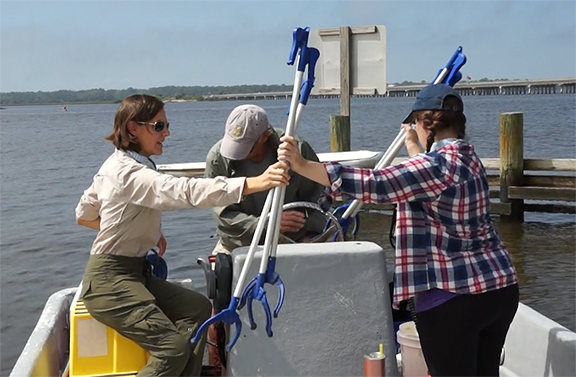
A cot, generator, iron pot, electric bike and a boat buoy were pulled out of the Matanzas River along with 233 pounds of trash within two hours. Some items, such as a rocking chair, were too big to get out of the water and into the boat and left behind for the Matanzas Riverkeeper’s Litter Gitter to collect later. This amount of trash is common for the Litter Gitter’s “heavy-duty” trips, which can yield a couple of hundred pounds, while “light-duty” trips range from about 10-50 pounds.
On average, Americans produce about 4.5 pounds of trash per person each day. This trash consists of packaging, food, furniture, electronics, tires and appliances. All this waste must go somewhere, and most of the time it ends up in our waterways, endangering local animals and plants, threatening water quality, as well as polluting outdoor spaces Florida depends on for tourism and recreation.
The Matanzas Riverkeeper is an organization whose mission is to protect the health of the Guana Tolomato watershed through advocacy, education and community engagement. The members of this organization spend a lot of time working on regulations and policies, though according to the organization’s executive director, that might not be enough.
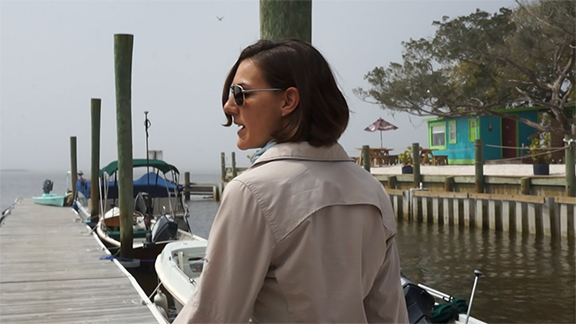
“At the end of the day, people need to know what’s going on out there and what they can do to help,” Jen Lomberk, the executive director of the Matanzas Riverkeeper, said. “We try and foster a sense of responsibility for our local waterways because that’s really going to be what makes the biggest difference.”
Lomberk is a native Floridian, who by trade is an attorney with a specialization in environmental law and policy. However, she never had the desire to be the stereotypical attorney, wearing a suit, heels and going to the courtroom to do litigations. Instead, she wanted to find a way to use her legal background and apply it in a regulatory and policy type of setting, particularly on the public interest environmental side. In doing so, she began to work for the Matanzas Riverkeeper in 2017.
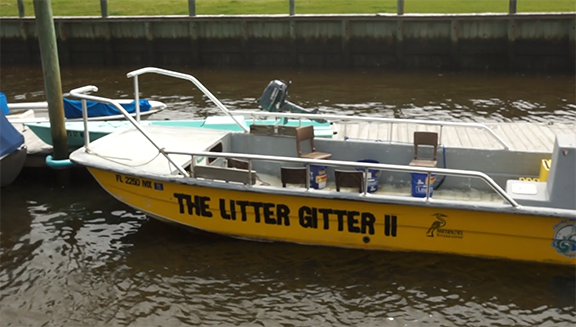
Community engagement is an extremely important aspect for the Matanzas Riverkeeper. To help educate individuals on their responsibility to the environment, the organization has a program called the “Litter Gitter,” which is named after the 24-foot Carolina Skiff the organization uses to take locals and visitors out on the Matanzas River for cleanups.
“We’ll find tons of trash out there on the waterways,” Lomberk said. “Last year, actually, we ended up picking up over 10,000 pounds of trash from local waterways.”
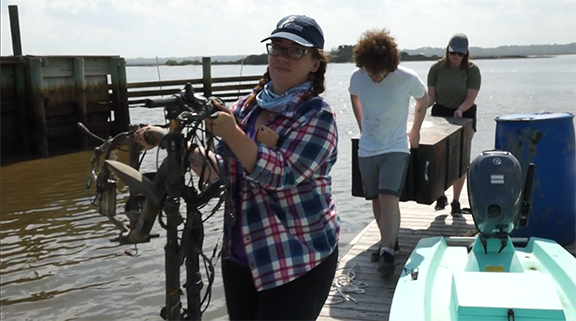
Trisha McCaul, a Flagler College student, and her boyfriend, Fritz Souweine, who was visiting from Chicago, participated in the Litter Gitter program towards the end of their spring break.
“As a young scientist and conservationist, it was great to pick the brains of other people passionate about the same topics I’m passionate about. It was also a really great way for me to serve my community,” McCaul said.
Like other individuals who participate in the Litter Gitter program, McCaul and Souweine got to enjoy the natural environment brought by the Matanzas River, learn more about the program and their surroundings, as well as collect 233 pounds of manmade objects that fell into the water.
“Sometimes you don’t think about the sorts of stuff that ends up in our waters. The easiest thing that comes to mind are plastic bottles and bags, all the small bits of plastic floating together. On our trip we didn’t see anything like that, but rather larger things that I think most people would assume go to be recycled, or to the landfill. The size and weight of the stuff we encountered surprised me most,” Souweine said.
“I’m really surprised that we picked up that many pounds of trash in a relatively short trip. It shows how much of a difference you can make in a relatively short amount of time,” McCaul said, when discovering how much trash they had collected on their trip.
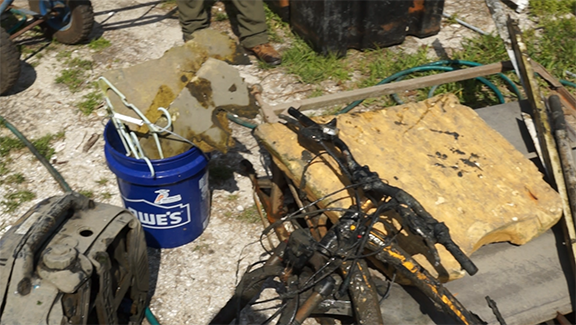
According to Lomberk, while the work the Litter Gitter does is an important and necessary way to help the environment, it is not going to solve the decline in environmental conditions.
For instance, an individual could try everything possible to keep trash from ending up in the waterways, but usually, something happens where that is the result. For instance, in the event of throwing something into the trash can, the trash might fall into the water due to a strong gust of wind or a raccoon disturbing the pile.
Even when someone recycles a plastic water bottle, it is assumed the object will be made into another plastic water bottle, and then another, and so on. However, that is not the case, as only an exceedingly small percentage of plastic is recycled.
“Things I like to tell people is that pretty much everything you do affects our local waterways.” Said Lomberk. “People think that if they don’t live on the water, if they don’t have waterfront property, then they’re more insulated from it. But that’s not true. Literally, everything we do impacts our waterways because Florida is surrounded by water. We’re on top of water.”
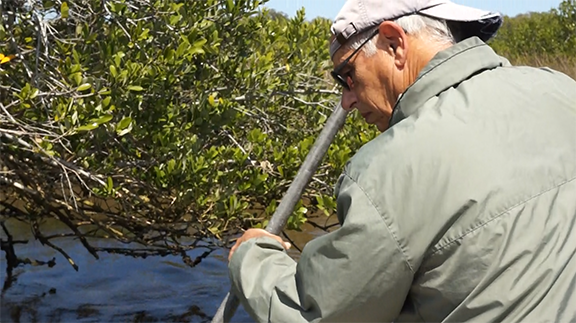
The most common items the Litter Gitter finds are single-use plastic products like Styrofoam cups, plastic straws, plastic bottles and grocery bags. They also collect a fair amount of furniture that could have been blown off someone’s docks or camping on the islands in the river, or even from boats that sink, as well as items people don’t want to pay to take to the dump, like tires and old appliances.
“When you look at the volumes of plastic and trash that are making their way into our oceans, or when you’re thinking about climate change, it can feel very hopeless very quickly. And so, I try and remind people, acknowledge your feelings, but don’t lose hope,” Lomberk said. “Take baby steps and don’t lose hope, I think are the two most important points.”
Some ways Lomberk suggests to people to help the waterway include:
1) reducing consumption of single-use plastics, so using reusable grocery bags or reusable water bottles
2) focusing on eco-friendly landscaping decisions, like planting Florida-friendly plants, removing invasive species, and not applying too much fertilizer or pesticides
3) voting with your dollars, choosing to spend money at corporations that have the same ideology
4) holding politicians accountable
“The legislative session just wrapped up, and that’s really where the rubber hits the road,” Lomberk said, adding that it’s important to see if the politicians are doing what they say they were going to do when they were running for election.
Plastic pollution in the water is more than just an aesthetic problem. While trash is traveling through the world’s rivers and oceans, as well as accumulating on beaches, the debris harms habitats, transports chemical pollutants, threatens surrounding wildlife, as well as interferes with the way humans use local waterways. While programs like the Litter Gitter might not put a complete stop to the water pollution issue, they are an important step to making others realize how bad the situation actually is, and that something must be done.
“Florida is a really special place, and we’re losing our natural areas really quickly,” Lomberk said. “If there aren’t strong advocates standing up to try and protect that, then it’s really going to be an entirely different place for our children and our grandchildren.”
Through community engagement, the Litter Gitter program brings awareness and gives individuals the tools to be advocates for their own communities. It helps them visually see that they need to change their own habits, become more aware of the issue, and be more involved politically, whether that is locally or at the state level.


Be the first to comment on "The Litter Gitter: Protecting What We Love"